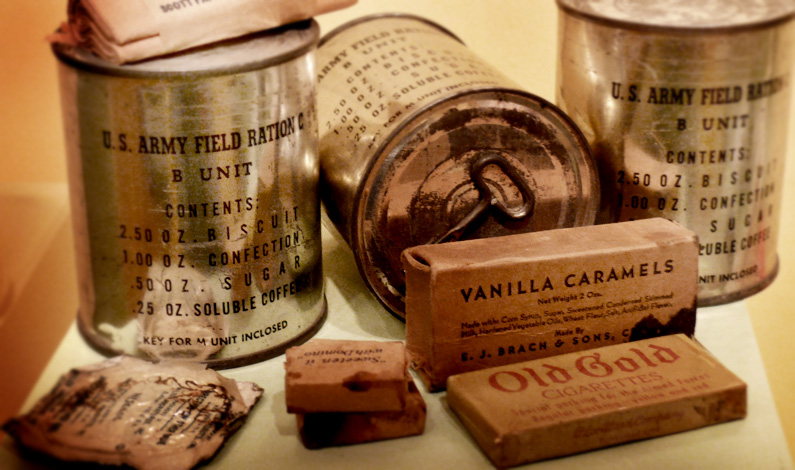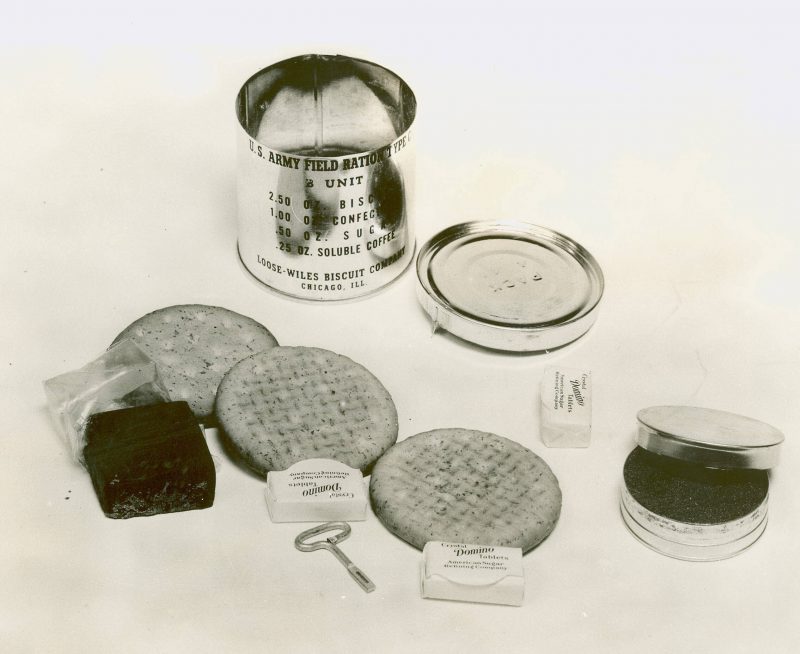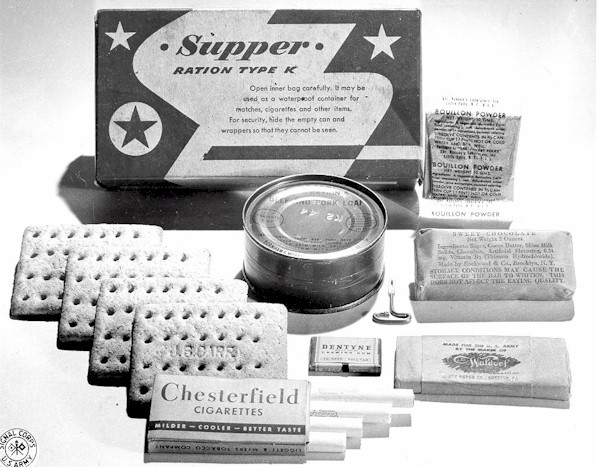
More than 70 years from ago, the Allied troops landed on the beached of Normandy during Operation Overlord. We all know that in that day the war’s course radically changed, but how many of us have thought about the food the soldiers had during and after the invasion of Normandy?
The food had to be as easy as possible in order to be transported in an effortless way. Also, the soldiers needed a nutritious food that could provide them with plenty of energy. The substance that could give the soldiers a food that met all these three required characteristics was chocolate. Specifically, the Hershey chocolate. 
The Hershey Chocolate Company was proposed in 1937 to create a special chocolate destined for emergency rations for the American soldiers. The US government had four requirements concerning the chocolate tablet: the chocolate had to weight 113 g, had to have a high energy value, had to withstand high temperatures and had to taste a little better than a boiled potato. The final product was named “D ration bar”, a mixture of chocolate, sugar, cocoa butter, powdered milk and oat flour. The mixture proved to be too thick for the factory’s equipment so the chocolate bars had to be done manually.
In terms of taste, many of those who tried it said they would have preferred a boiled potato. The combination of fat and oat flour resulted into a very dense chocolate bar and the sugar did nothing but hide the extremely bitter taste given by the dark chocolate. Because it was designed to withstand high temperatures it was almost impossible to take a bite from this chocolate. Most of the soldiers were grating the chocolate, turning it into small pieces, so they could chew it. In spite of the government’s efforts, many of the “D ration bar” chocolate bars ended up in the trash. Later, during the war, Hershey introduced a new version of chocolate called “Tropical”, particularly designed to withstand the high temperatures in the Pacific.

But “Hitler’s secret weapon”, as the soldiers called the Hershey chocolate because of its bad taste, was not the only delicacy that they received in their ratios. They were also given coffee, processed cheese, sugar, instant beverages, candy, chewing gum, canned meat and cigarettes. But the chocolate was the most important because it was an easy way of giving soldiers a boost of energy in the most difficult times.